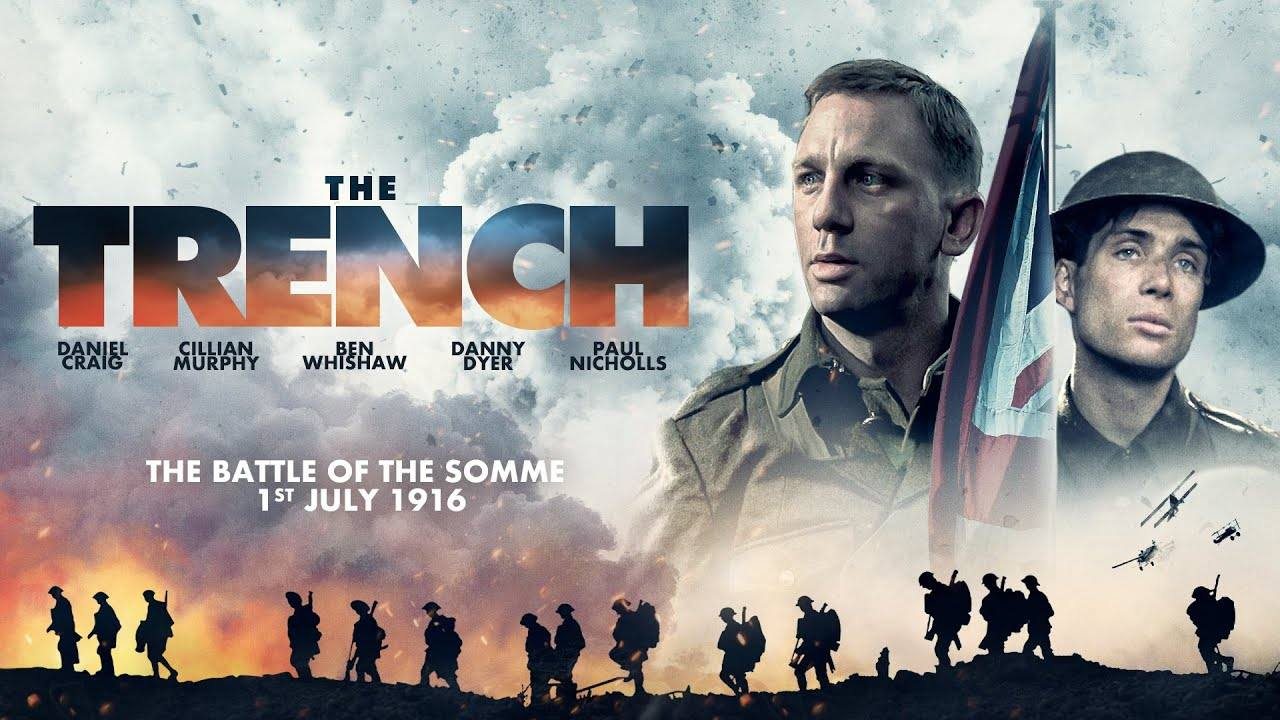The Trench (1999)

The Trench (1999), directed by William Boyd, is a compelling British war film set during World War I. With a cast that includes Paul Nicholls, Julian Rhind-Tutt, and Daniel Craig, the film provides a poignant examination of the experiences of soldiers entrenched in the brutal realities of trench warfare. Through its nuanced portrayal of the human condition in wartime, The Trench offers an engaging and reflective exploration of war, camaraderie, and the impact of conflict on the individual.
Set in the weeks leading up to the infamous Battle of the Somme, The Trench focuses on a group of British soldiers stationed in a trench on the Western Front. The film follows these men as they endure the harsh conditions of trench warfare and face the uncertainty and fear of impending battle. The narrative centers around their interactions, their personal struggles, and their attempts to cope with the constant threat of death and the psychological toll of war.
As the soldiers await the anticipated offensive, the film delves into their daily lives, highlighting their interactions with each other and the challenges they face. The trench becomes a microcosm of the broader war, representing both the physical and emotional confines within which the soldiers operate. The film portrays the camaraderie and brotherhood that develop among the soldiers, as well as the tension and conflict that arise from their different backgrounds and personalities.

The impending battle serves as a constant backdrop, creating a sense of dread and anticipation. The film captures the psychological strain on the soldiers, their reflections on the nature of war, and their personal fears and hopes. As the narrative unfolds, the film explores themes of loyalty, sacrifice, and the struggle to maintain one’s humanity in the face of relentless violence.
War is a central theme in The Trench. The film provides a stark and unflinching depiction of the realities of trench warfare, including the physical conditions, the psychological impact, and the constant threat of death. Through its portrayal of the soldiers’ experiences, the film emphasizes the brutality and futility of war, offering a sobering reflection on the cost of conflict.

Brotherhood is another significant theme in the film. The soldiers’ relationships with one another form the emotional core of the narrative. The film highlights the bonds that are forged in the crucible of war, as the men rely on each other for support, camaraderie, and a sense of shared purpose. The portrayal of brotherhood underscores the humanity of the soldiers and the ways in which they find strength and solace in their connections with each other.
Humanity is explored through the soldiers’ struggles to maintain their sense of self and their moral compass amidst the chaos of war. The film delves into the internal conflicts and ethical dilemmas faced by the characters, examining how they navigate their fears, hopes, and the moral complexities of combat. The struggle to retain one’s humanity in the face of dehumanizing circumstances is a recurring theme, adding depth to the film’s exploration of the human condition.
Paul Nicholls delivers a strong performance as Private Gibbon, capturing the character’s sense of vulnerability and internal conflict. Nicholls portrays Gibbon’s personal struggles and his efforts to cope with the realities of war, providing a relatable and empathetic perspective on the character’s experiences.

Julian Rhind-Tutt’s portrayal of Private Truby is another highlight of the film. Rhind-Tutt brings depth to Truby’s character, capturing his sense of camaraderie and his own personal challenges. Truby’s interactions with the other soldiers and his reactions to the impending battle add emotional resonance to the film.
Daniel Craig’s role as Corporal Edwards adds a dynamic element to the story. Craig’s portrayal of Edwards captures the character’s complexity and his leadership within the group. The film’s exploration of Edwards’ character provides insight into the various ways in which individuals cope with the pressures of war and their roles within the group.
William Boyd’s direction of The Trench is marked by its realistic and immersive approach to depicting the experiences of soldiers in World War I. Boyd’s attention to detail in portraying the physical and psychological aspects of trench warfare contributes to the film’s authenticity and emotional impact. The film’s focus on character interactions and the daily lives of the soldiers adds depth to the narrative, creating a nuanced portrayal of the wartime experience.

The cinematography by Peter Hannan captures the grim and claustrophobic environment of the trench, using lighting and camera angles to convey the mood and atmosphere of the setting. The visual style contributes to the film’s immersive quality, enhancing the audience’s engagement with the characters and their experiences.
The film’s sound design and score further contribute to its emotional impact. The use of sound effects and music helps to convey the tension, fear, and camaraderie of the soldiers’ experiences, adding to the film’s overall atmosphere and resonance.
The Trench received generally positive reviews from critics, who praised its realistic portrayal of trench warfare and its focus on character development. The film’s exploration of the human aspects of war and its emphasis on the personal experiences of the soldiers were well-received, contributing to its impact and appeal.
The film was appreciated for its ability to convey the harsh realities of war while also highlighting the bonds of brotherhood and the resilience of the human spirit. The performances by the cast, particularly Paul Nicholls, Julian Rhind-Tutt, and Daniel Craig, were noted as strong elements that enhanced the film’s emotional and dramatic impact.
However, some critics felt that the film’s focus on character interactions and personal struggles could have been complemented by a more detailed exploration of the broader context of the war. While the film’s portrayal of the trench experience was praised, some felt that a more comprehensive depiction of the historical and strategic aspects of World War I could have added further depth to the narrative.
The Trench (1999) is a thought-provoking and emotionally resonant film that explores the experiences of soldiers in World War I through the lens of trench warfare. Directed by William Boyd and featuring strong performances from Paul Nicholls, Julian Rhind-Tutt, and Daniel Craig, the film offers a compelling examination of the human condition in the face of conflict. Through its portrayal of war, brotherhood, and humanity, The Trench provides a poignant and reflective exploration of the impact of war on individuals and their relationships. Despite its mixed reception, the film remains a significant contribution to the genre and continues to provoke reflection on the nature of war and the resilience of the human spirit.











